When we hear the word “viral”, we instantly think about a piece of content making rapid rounds on the Internet. However, you can apply the same concept to gain more customers for your SaaS product.
Patrick Thompson of Amplitude shares how to do that. When he worked at Atlassian, he spent half a year developing their virality strategy: how to increase their customer base, provide them more value, and eventually get them to invite more people.
So how do you make your product go viral? Patrick says it’s something that you can definitely engineer into your product:
“It’s not a magic wand that you can wave to bake in virality in a matter of weeks or months. You do have to lay the foundation for it to thrive, and it’s not always an easy task depending on your organization.”
In this article, you will learn:
- The definition of virality and the viral loops
- The four types of viral loops: word of mouth, direct, incentivized, and organic
- How to measure virality using the K-factor
- How to bake virality into your SaaS product
Watch the full recording below or read on for the key takeaways.
Don’t wait for the muse. Apply this step-by-step method to write high-performing email campaigns in hours, not weeks.
What is virality?
Virality occurs in a product when one user helps acquire another user.
“There are many ways you can grow your product. But when you use virality, it can have a huge impact on accelerating the growth of your business and lowering your customer acquisition costs. This is one of the areas that you can obviously invest in and you get compounding growth and returns over time as well.”
What are viral loops?
Viral loops are the set of steps users take in your product to help acquire another user.
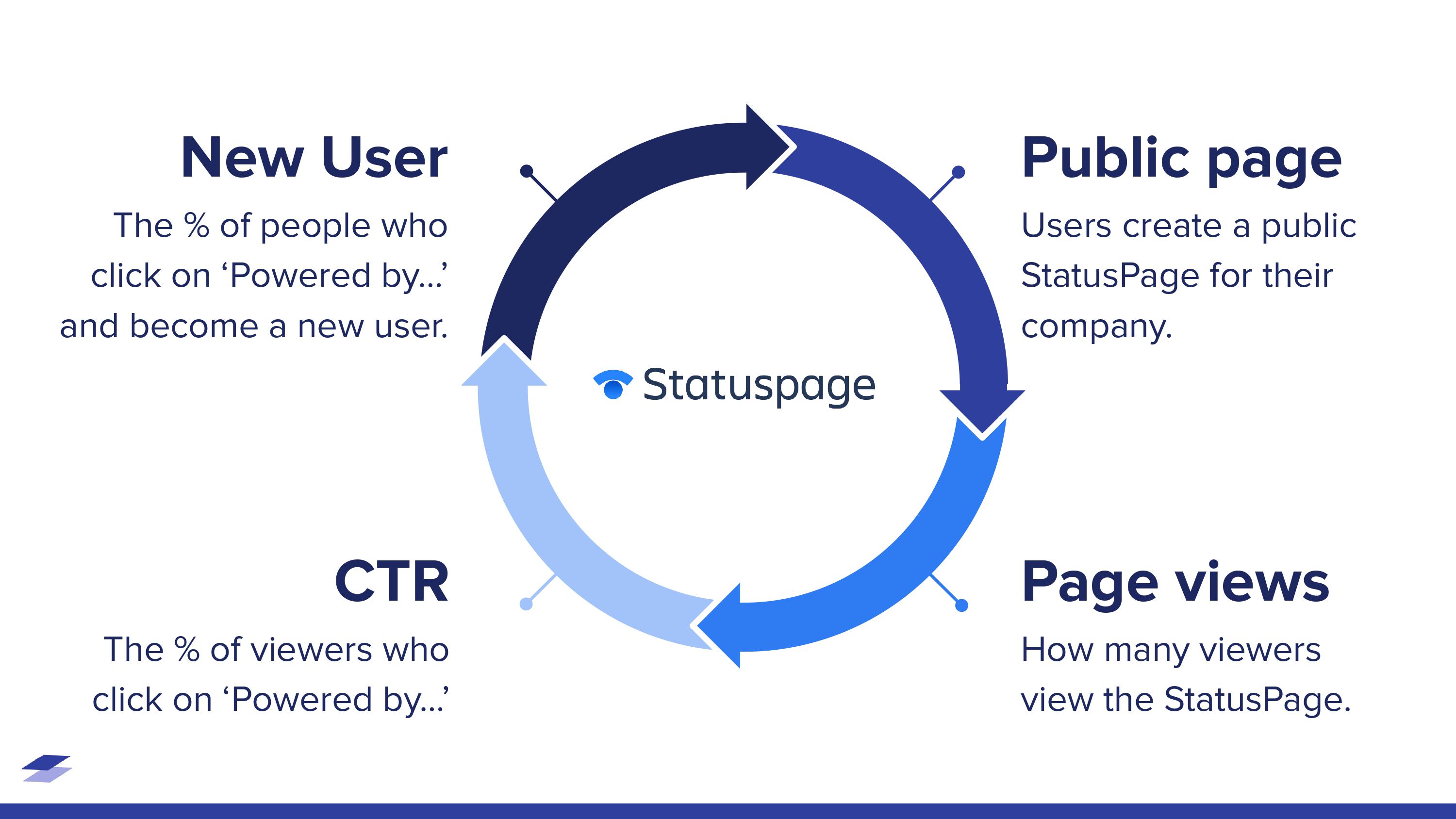
In this example, we see that the viral loop above starts with leads viewing pages with the “Powered by Statuspage” and restarts when these new users create their own page with the same platform.
The four common types of viral loops
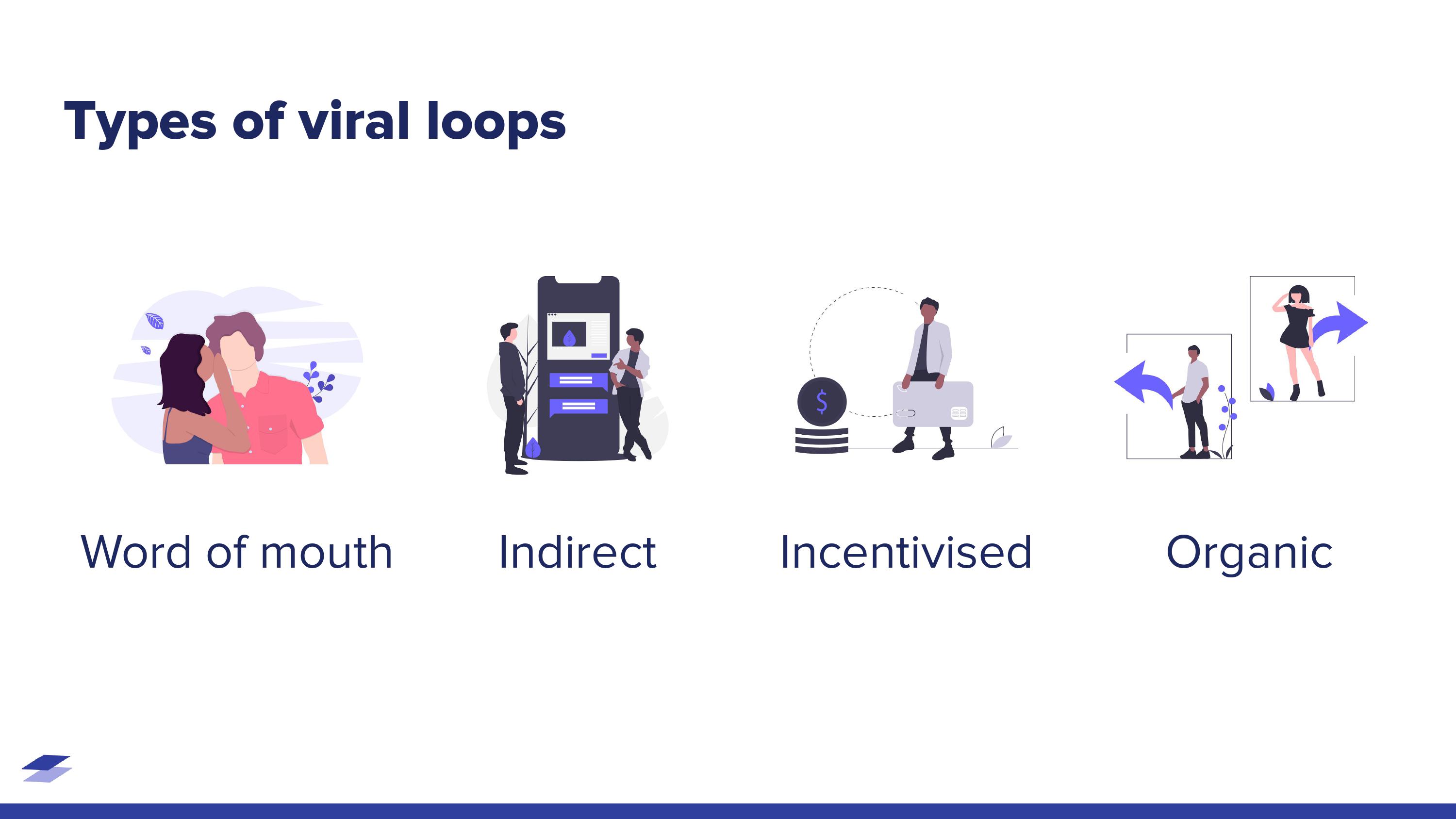
While there are four different types, Patrick says that real-world applications usually involve two or more types of viral loops with compounding effects.
Word of mouth
Word of mouth is when one person tells another about your product.
This is what Jay Simmons, President of Atlassian, wanted to invest in when they were building Atlassian in the early days.
“The flywheel begins with creating a great product. Back in the early days of Atlassian, we talked about building a remarkable product. We chose the word ‘remarkable’ with intention. We wanted to build a product that people felt compelled to remark upon. That would then build word of mouth which would help us acquire more customers.”
Patrick shares that Atlassian’s strategies were built around the goal of building an excellent experience for their users. With this goal in mind, the company invested more heavily in product development:
“We wanted the product to be one of our primary acquisition levers because we wanted to build a product that people would remark on, therefore acquire more customers versus just spending money more traditionally in sales and marketing.”
Indirect viral loops
Indirect viral loop happens when a user indirectly exposes other users to your product while using it.
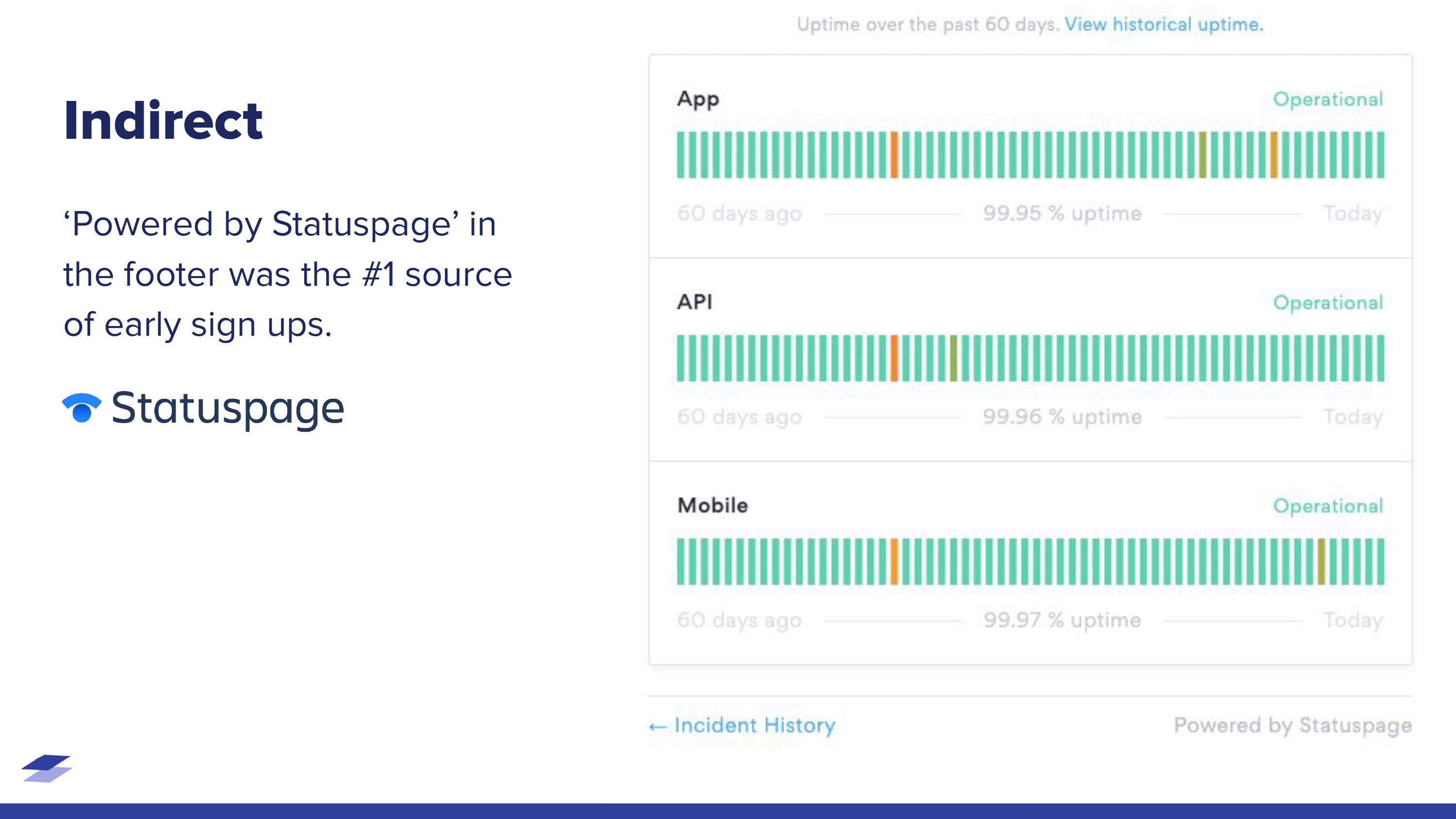
In this example, we see the placement of “Powered by [product]” at the footer of a page as a form of an indirect viral loop.
“Users would view a Statuspage from another company and they would then decide to sign up or create one on their own. And they could get started in less than 10 minutes of getting their own Statuspage up and running. This was the number one driver for growth for Statuspage both pre and post-acquisition.”
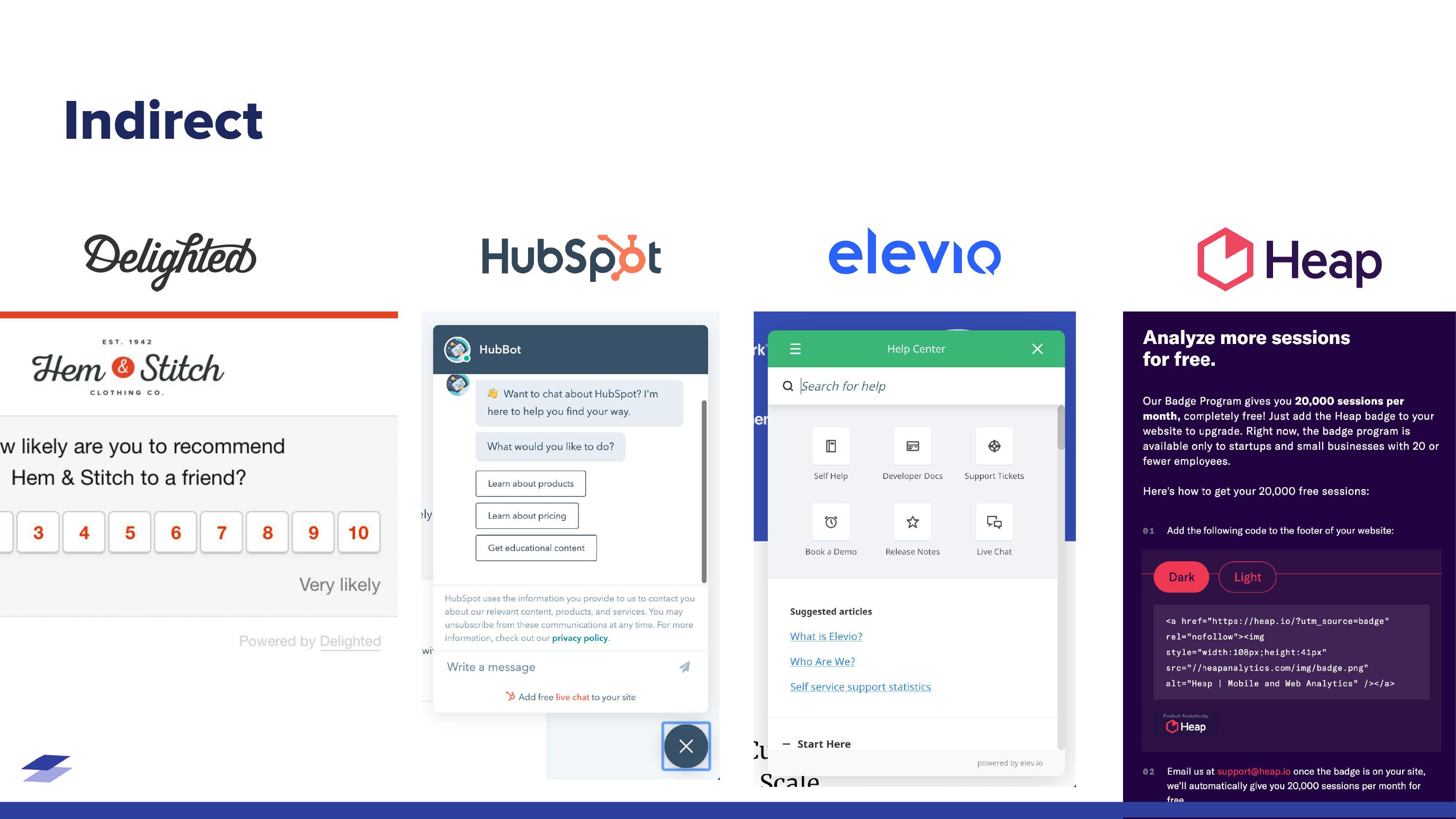
Incentivized loops
Incentivized viral loops happen when users are directly rewarded for inviting others to your product.
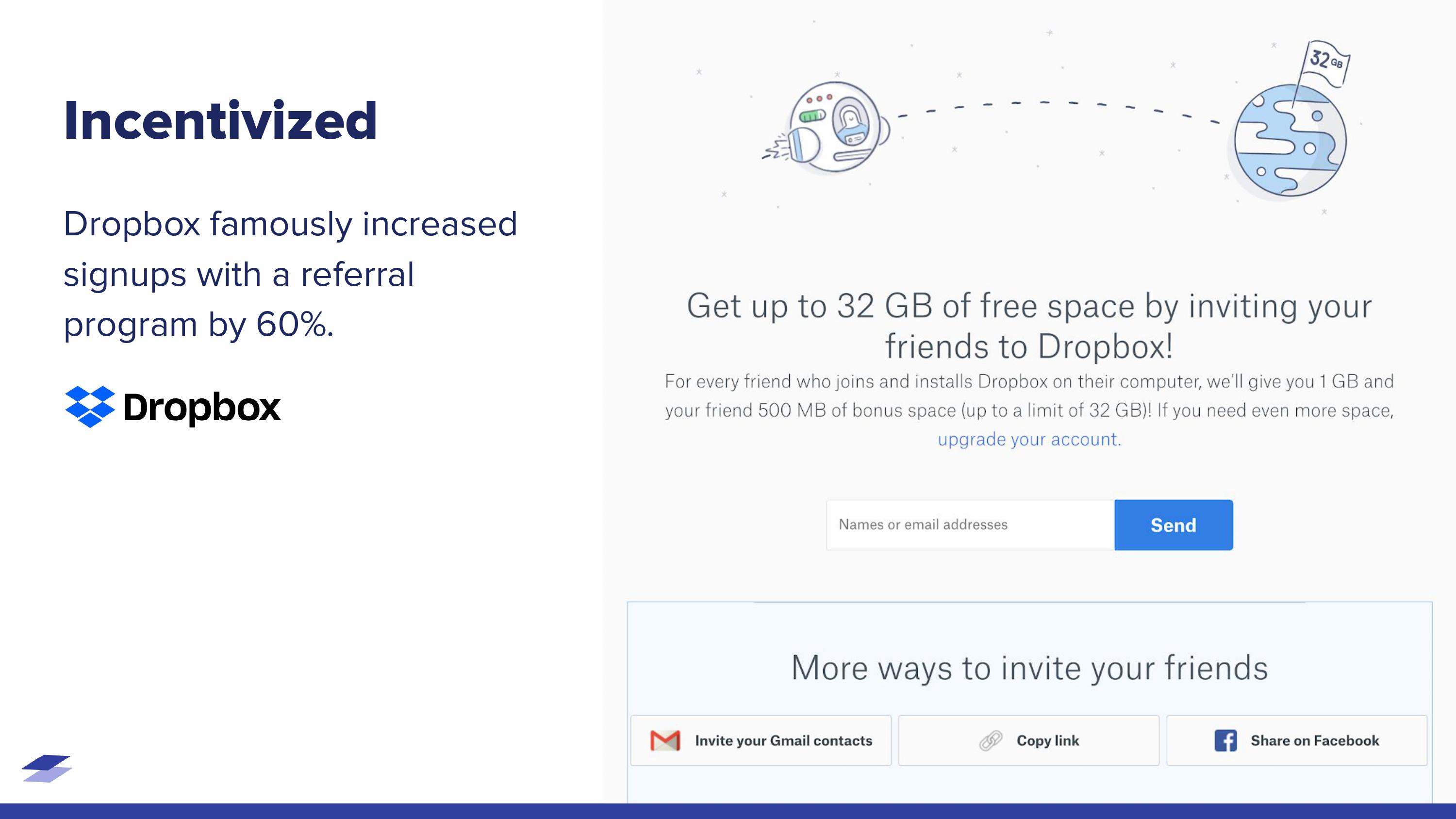
The most famous example of incentivized viral loops is the one done by Dropbox. With their double-sided incentive model, they increased sign-ups by 60%.
“The nice thing about this loop is as users continue to use Dropbox, they’ll hit their storage limit again and again, causing them to continue to share Dropbox to increase their storage or upgrade to a paid account. So either way, it’s a net win for Dropbox.
If you think about the customer acquisition costs for them to acquire a new customer, getting your existing customer base to acquire those customers for you is much, much cheaper.”
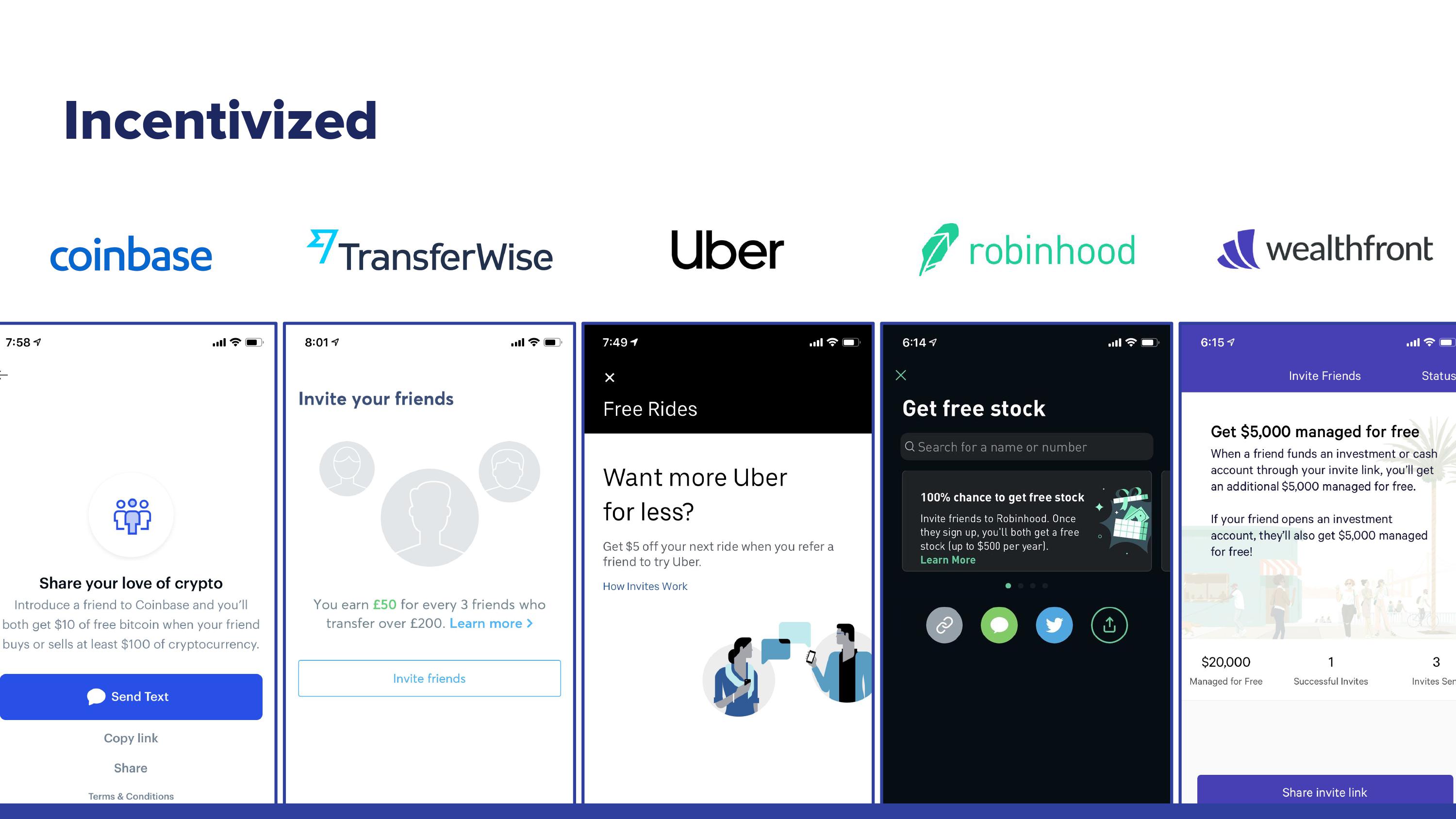
While the most traditional incentivized loops are monetary, Patrick shares that there are other ways to do it:
“There are different ways to build in this kind of a notion of incentivized to growth loops into your business and it scales depending on whether or not you’re a B2C organization or a B2B organization.
We tried everything from giving away shirts, AWS credit, and trial extensions. In some cases, the incentive can be as simple as a user sharing an achievement they’ve accomplished. So here, we’re not really giving the user anything of monetary value but allowing them to build their own prestige or brand here.”
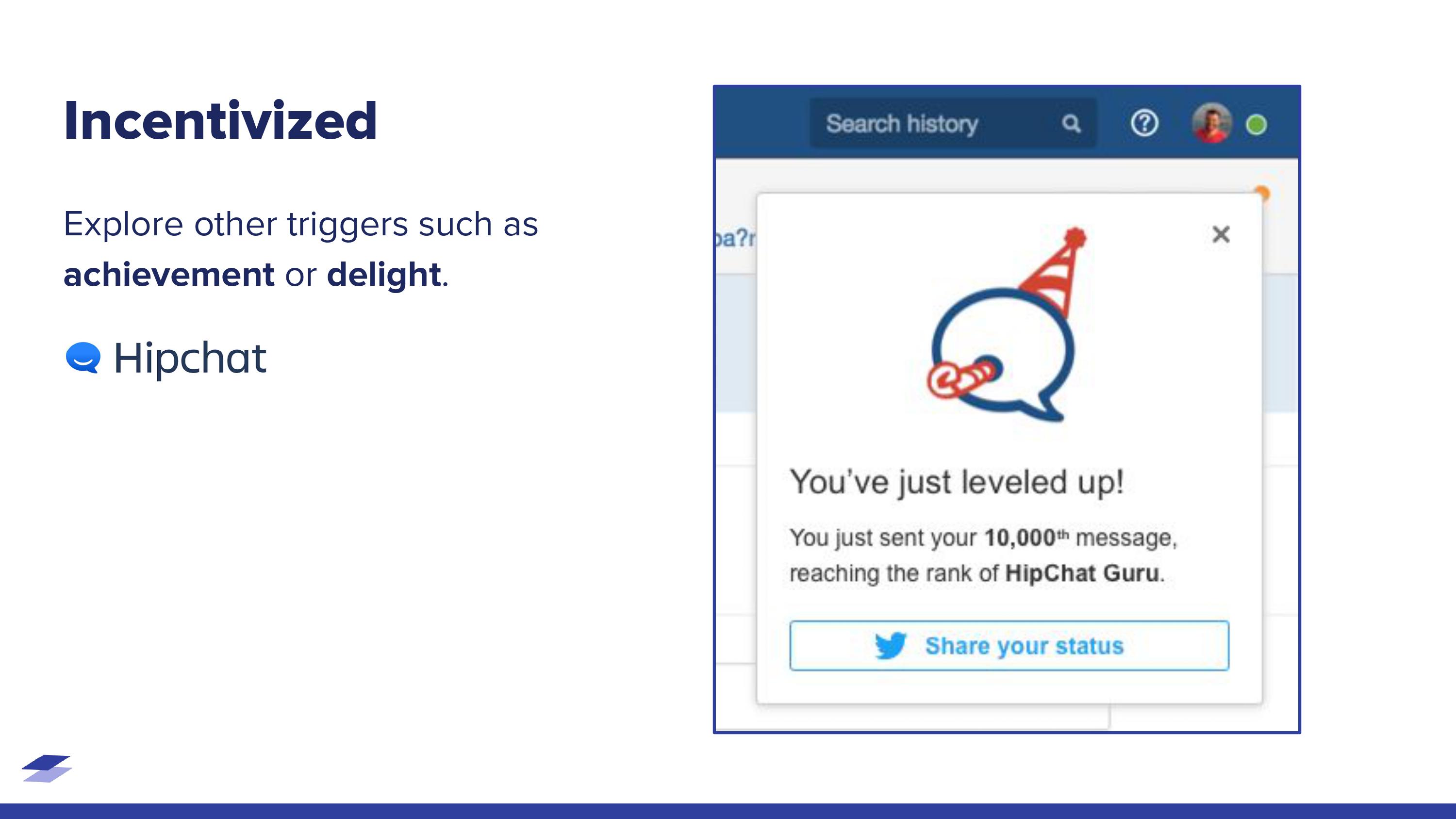
Organic viral loops
Organic viral loops happen when a user invites others as part of experiencing your product’s core value. The most common example is collaboration between team members.
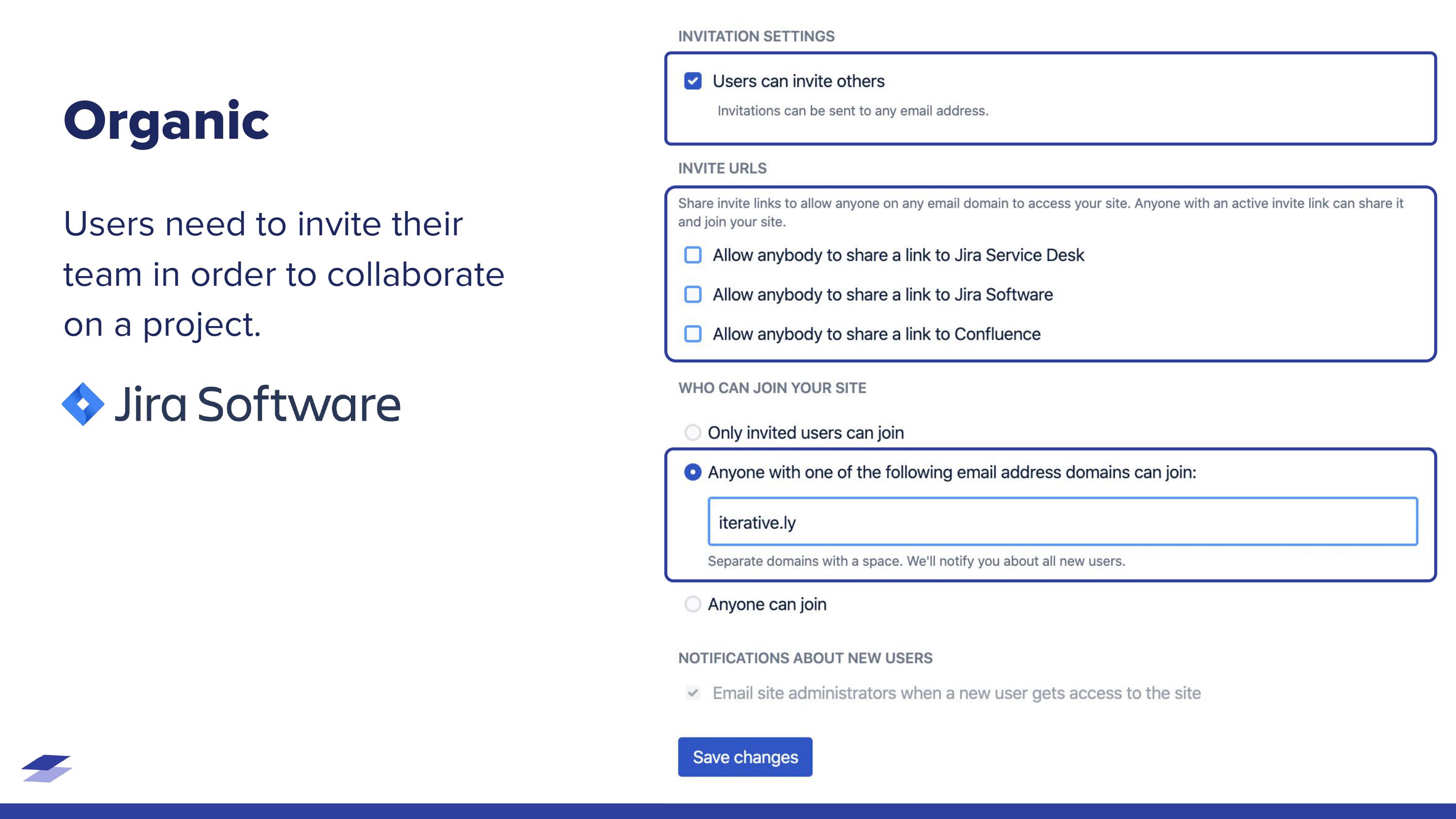
In the case of Jira Software, collaboration happens within and outside the team and Atlassian worked on removing the sign-up friction. While this meant a lot of work upfront, laying the foundation was worth it in the long run:
“We started allowing folks to share invite URLs, create things like domain restricted sign up. When we added domain-enabled signup so that anyone with a verified domain could join, this was kind of a massive lift and effort for us as an organization.
We had to kind of rebuild our entire authentication system and our entire user management system as well. So we’re talking multiple quarters of work in order to do this but it had a massive impact at the end of the day of being able to give us a good foundation where you weren’t dependent upon your IT admin or an administrator.”
Patrick shared that they also experimented on other simple things such as the layout and content of the invite email to increase organic signup.
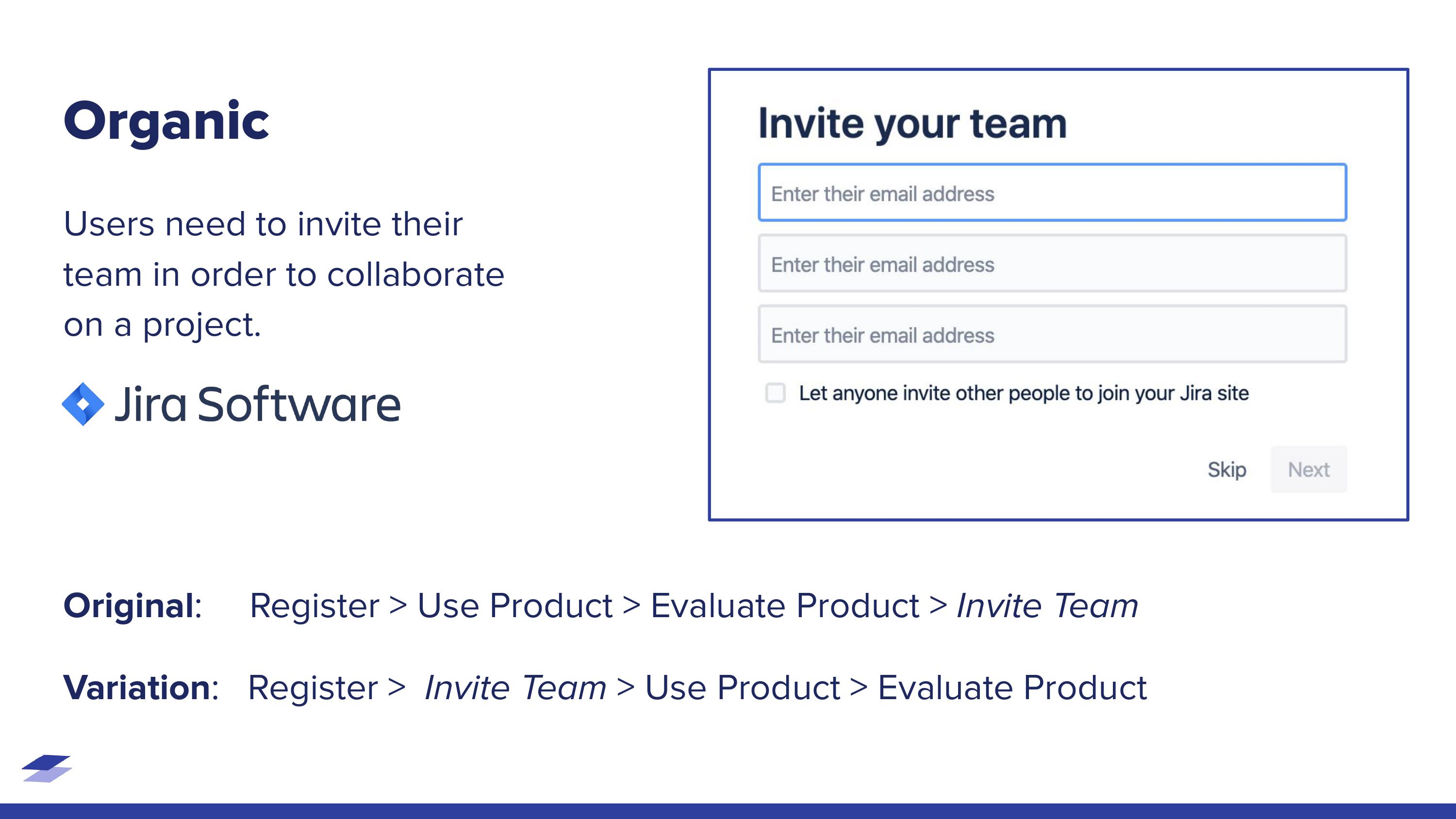
In one of their experiments, they found that changing the steps in the journey also helped acquire more users:
“This improved the number of invited and active users at the end of a trial, which meant that we had a higher tendency to get customers to convert from their trial to a paid account.”
Don’t wait for the muse. Apply this step-by-step method to write high-performing email campaigns in hours, not weeks.
How to bake virality into your product
Step 1. Build a great product
“Focus on making sure that your product is delivering value to your customers. If you don’t have a product-market fit, users aren’t going to stay, and then it just turns into a leaky bucket. Virality broadly helps, but if you don’t have product-market fit, you’re just putting a bandaid on something that’s going to fluster.”
Step 2. Measure your baseline and the K-factor
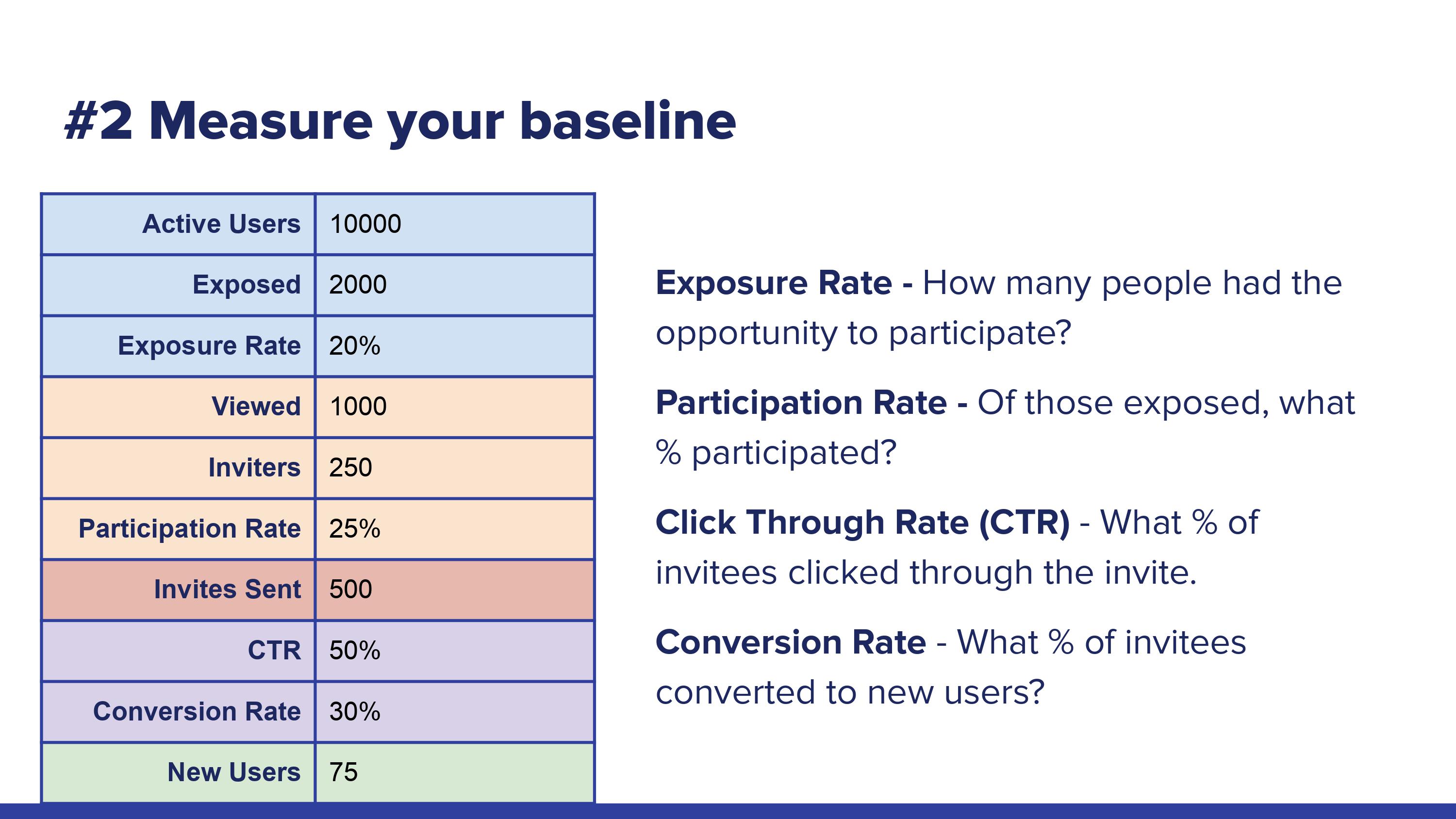
Before doing any testing, we must first know what we’re working with:
“You’ll want to measure each step so that you can see how it’s performing and where to focus on to improve it so you can build it.”
Patrick advises using a dashboard on platforms like Amplitude or something as basic as a spreadsheet. The important thing is to record and track the data.
He also shares that there are two things to keep in mind when it comes to data:
“One thing to keep in mind is that frequency at each step, a user would participate. The other thing is that viral loops compound so you can think of them as stacking on top of each other. So you can have viral loops kickoff other viral loops at the end of the day.”
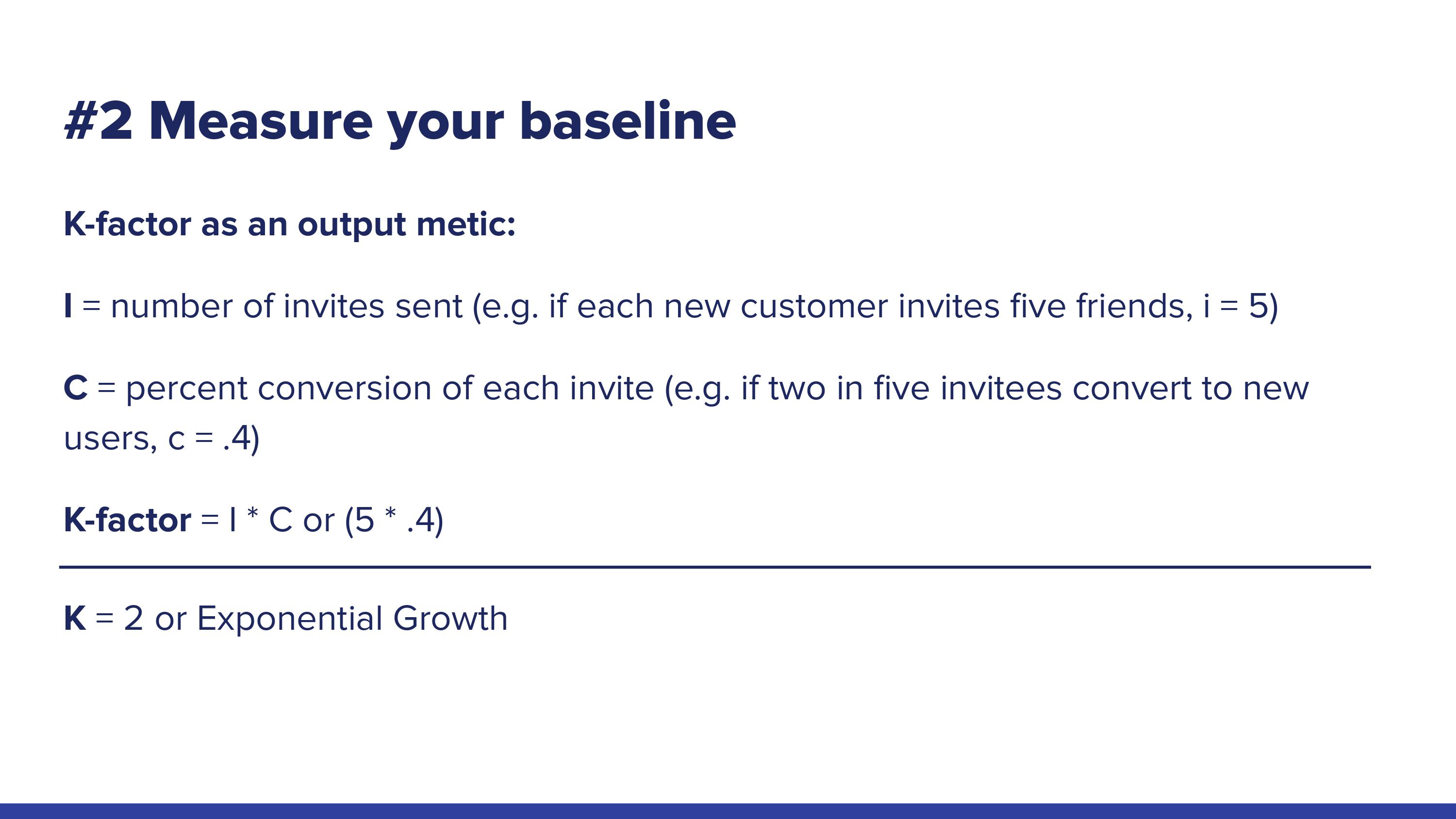
Patrick also advises measuring your K-factor as part of your baseline. The K-factor is the output metric that is used to describe the growth rate of products, which is essentially the sum of all the viral loops in your product.
“If you have a growth rate of greater than one, you have exponential growth. Less than one exponential decline.”
Step 3. Map out the customer journey
Customer journey mapping helps you visualize how customers experience your product or service and how they feel along the way. The map should be used together with user research and customer interviews so that you can identify their pain points in the journey.
The information you gather from these processes can help with brainstorming and experimenting later on.
Some questions you might want to answer through the process of mapping out the customer journey are:
- Why would users want to invite more?
- Is this the right time to share what I’m working on with my team?
- Do I need help in completing this step?
“These are common questions that you might ask throughout an entire user experience or user journey map and that will let you know whether or not there’s a great spot within that journey to help bake in virality.”
Step 4. Brainstorm solutions
When brainstorming ideas, Patrick advises using design thinking exercises like Crazy 8’s, Disruptive Brainstorming, and SCAMPER.
“The goal here is to come up with loads of ideas and eventually call them down to your best.”
Step 5. Stack rank
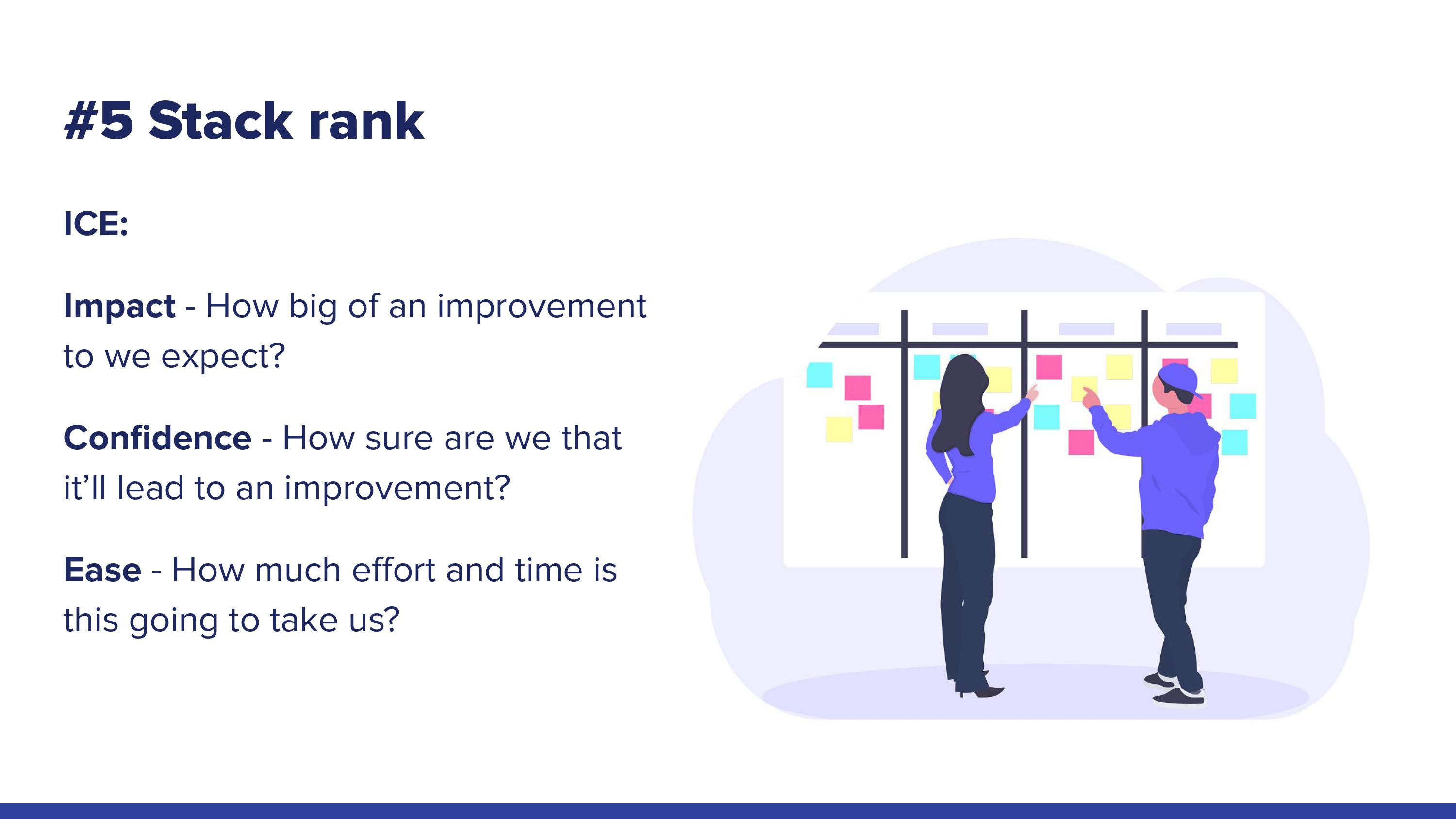
Once you have a list of experiment ideas, the next step is to make a shortlist to begin building an experiment backlog.
“Your ideal experiment is something that has a big impact is backed up by solid research and evidence and requires minimal effort to build.”
To do this, you can use the ICE criteria to score the experiments on a scale of 1 to 10 (where 10 is the best score). Scores are added up to help you determine which experiment you should prioritize in your backlog.
Takeaways from Patrick’s previous experiments
#1. No dark patterns
Instead of using deceptive design to get users to take action, focus your energy on providing long-term customer value.
“A common example of this was like the early Yahoo! days where you have a lot of friends spam, ‘Hey, add me to your contact list’ or when you join, ‘Give me permission to your contact list. I’m going to send a message to everybody on your contact list.’ Don’t do that. The goal is to provide value and not erode customer trust.”
#2. Lay the foundation
Because these experiments will cause some changes and disruption in your organization, you have to lay the foundation in many aspects to lessen the friction. Laying the foundation involves the following:
- Mapping out your viral loops
- Instrumenting the product to quantify each loop and capturing a baseline
- Get the team to buy in
Patrick shares that the toughest one to do would be getting the organizational buy-in:
“A change management and organizational friction are typically the largest hurdles that teams have to overcome. So I just don’t jump in without getting folks on board with what you’re doing. It takes many months, if not years, to lay the foundation.”
#3. Stack your loops
“Loops compound and you can stack them as well.”
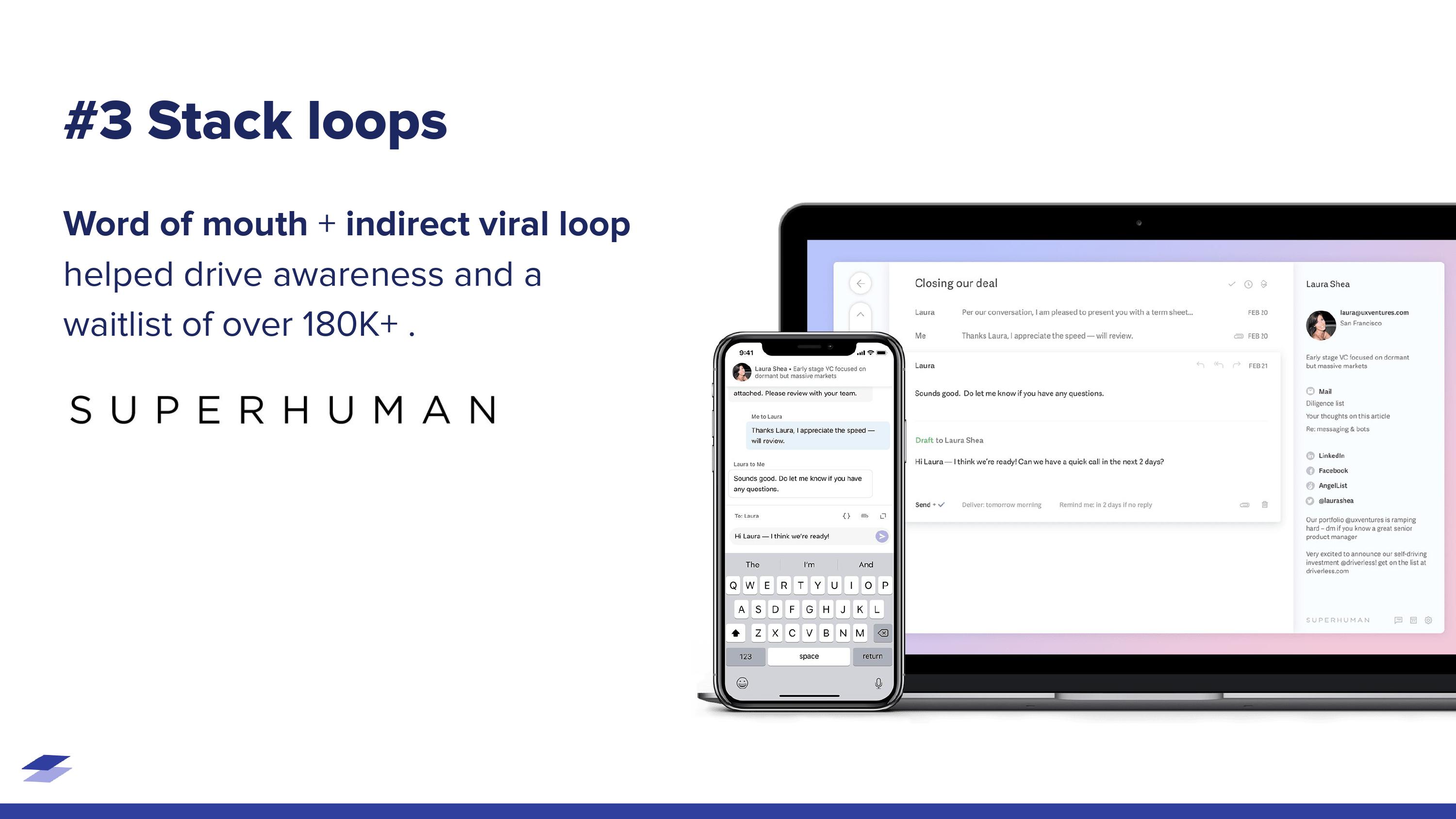
Learn more from Amplitude
Amplitude is a product intelligence platform that provides digital product tools that help teams run and grow their businesses. If you want to learn more about using data analytics to improve your SaaS, you can look at their selection of courses.
Don’t miss out on new articles. Subscribe to our newsletter and get your monthly dose of SaaS email marketing insights.





